We use information collected through cookies and similar technologies to improve your experience on our site, analyze how you use it and for marketing purposes.
Your privacy settings
We and our partners use information collected through cookies and similar technologies to improve your experience on our site, analyze how you use it and for marketing purposes. Because we respect your right to privacy, you can choose not to allow some types of cookies. However, blocking some types of cookies may impact your experience of the site and the services we are able to offer. In some cases, data obtained from cookies is shared with third parties for analytics or marketing reasons. You can exercise your right to opt-out of that sharing at any time by disabling cookies.
Manage Consent Preferences
Necessary
Always ON
These cookies and scripts are necessary for the website to function and cannot be switched off. They are usually only set in response to actions made by you which amount to a request for services, such as setting your privacy preferences, logging in or filling in forms. You can set your browser to block oralert you about these cookies, but some parts of the site will not then work. These cookies do not store any personally identifiable information.
Analytics
These cookies and scripts allow us to count visits and traffic sources, so we can measure and improve the performance of our site. They help us know which pages are the most and least popular and see how visitors move around the site. All information these cookies collect is aggregated and therefore anonymous. If you do not allow these cookies and scripts, we will not know when you have visited our site.
Embedded Videos
These cookies and scripts may be set through our site by external video hosting services likeYouTube or Vimeo. They may be used to deliver video content on our website. It's possible for the video provider to build a profile of your interests and show you relevant adverts on this or other websites. They do not directly store personal information, but are based on uniquely identifying your browser and internet device. If you do not allow these cookies or scripts it is possible that embedded video will not function as expected.
Google Fonts
Google Fonts is a font embedding service library. Google Fonts are stored on Google's CDN. The Google Fonts API is designed to limit the collection, storage, and use of end-user data to only what is needed to serve fonts efficiently. Use of Google Fonts API is unauthenticated. No cookies are sent by website visitors to the Google Fonts API. Requests to the Google Fonts API are made to resource-specific domains, such as fonts.googleapis.com or fonts.gstatic.com. This means your font requests are separate from and don't contain any credentials you send to google.com while using other Google services that are authenticated, such as Gmail.
Marketing
These cookies and scripts may be set through our site by our advertising partners. They may be used by those companies to build a profile of your interests and show you relevant adverts on other sites. They do not store directly personal information, but are based on uniquely identifying your browser and internet device. If you do not allow these cookies and scripts, you will experience less targeted advertising.
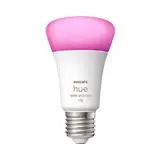
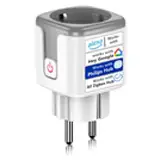
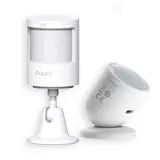
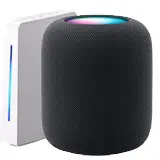
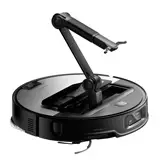
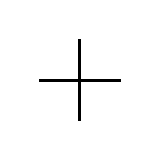
TOP 5 gadgets to reduce water consumption
Are you concerned about the impact your water consumption has on the planet? You're not alone. Reducing your water consumption is not only good for the environment, but it can also help you save money on your bills. The good news is that there are innovative gadgets that make saving water easier and more effective than ever. Discover the top 5!
TOP 5 Smart Gadgets to Reduce Water Consumption at Home
In this article, we'll explore the most efficient and easy-to-use gadgets that will help you significantly reduce your water consumption. From low-flow showerheads to smart sprinkler systems, there's a solution for every home and budget.
1. Low-Flow Showerheads: A Simple Change with a Big Impact
Low-flow showerheads are one of the simplest and most economical ways to reduce water consumption without sacrificing the showering experience. These headers are designed to limit the amount of water flowing through them, usually by using aeration or flow restrictors.
How do they work? Conventional showerheads can consume up to 2.5 gallons per minute (GPM), while low-flow showerheads often use 1.5 GPM or less. This means you can save up to a gallon of water per minute, which translates into significant long-term savings.
Popular examples:
2. Faucet Aerators: Small Changes, Big Savings
Like low-flow showerheads, faucet aerators are devices that are installed on the end of faucets to reduce water flow. They are an incredibly easy and inexpensive way to save water in the kitchen and bathroom.
How do they work? Aerators mix air with the water, which reduces the amount of water coming out of the faucet without affecting the pressure. This allows you to wash dishes, brush your teeth and wash your hands using less water.
Popular examples:
3. Smart Irrigation Systems: Precise Control for a Healthy Garden
Landscape irrigation can be a major source of water waste, especially if done incorrectly. Smart irrigation systems use technology to optimize watering and ensure that your plants receive just the right amount of water.
How do they work? These systems typically include sensors that measure soil moisture, temperature and weather conditions. This information is used to automatically adjust the irrigation schedule, preventing overwatering and water waste.
Popular examples:
4. Smart Water Leak Detectors: Protection Against Invisible Waste
Water leaks, even small ones, can waste large amounts of water over time. Smart water leak detectors alert you to any leaks in your home, allowing you to act quickly to prevent further damage and water waste.
How do they work? These devices use sensors to detect the presence of water outside of the usual places, such as under sinks, near toilets or in the basement. They can also monitor water consumption and alert you if there is an unusual increase, which could indicate a hidden leak.
Popular examples:
5. Dual Flush Toilets: Choose the Amount of Water You Need
Dual flush toilets allow you to choose between a full flush for solid waste and a partial flush for liquid waste, saving water with every use. They are a more efficient option than traditional single-flush toilets.
How do they work? These toilets have two buttons or levers: one for full flush, which uses more water, and one for partial flush, which uses less water. This allows you to use only the amount of water needed for each situation.
Popular examples:
Recommendations and Best Practices to Maximize Water Savings
In addition to using these gadgets, there are other steps you can take to reduce your water consumption:
Conclusion: Save Water and Protect the Planet
Reducing water consumption is a responsibility we all share. Implementing these smart gadgets and adopting water conservation practices can make a big difference in protecting our water resources and reducing your water bills. Start saving water and creating a more sustainable future today!
What are you waiting for to start saving water? Share this article with your friends and family so they can join the movement too. Leave a comment with your own ideas and tips for reducing water consumption - together we can make a difference!
Related Posts
How to save electricity with smart plugs
Are you worried about your electricity bill going up? Want to reduce your carbon footprint without making things complicated? Smart plugs could be the solution you've been looking for. They're not magic, but they're close. They let you control the energy consumption of your electrical devices, saving you money and contributing to a more sustainable planet.
How do smart solar panels work?
Can you imagine solar panels that not only capture sunlight, but also think and adapt to maximize their efficiency? Welcome to the world of smart solar panels! Forget conventional solar installations. We are talking about a more efficient, sustainable and, above all, smart energy future. In this article, we will explore how to ...
Is an autonomous 100% home with renewable energy possible?
Can you imagine living in a home that is completely self-sufficient with clean energy? An autonomous 100% home with renewable energy. Sounds futuristic, right? But, it's more achievable than you think! Forget about electricity bills and embrace a sustainable lifestyle. In this article, we will explore whether it is really possible to achieve this ...
Wireless homes: What devices run on batteries?
Imagine a home with no tangled wires, no plugs in sight. A minimalist, modern home where power flows wirelessly. Sounds like science fiction, doesn't it? Well, the reality is approaching by leaps and bounds. More and more devices are becoming battery-powered, freeing us from the tyranny of wires and transforming the way we ...